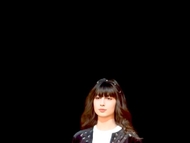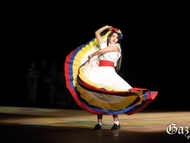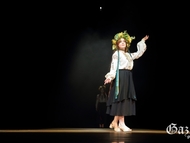 Although Western forms of heating have become more widely used in Korea, Koreans still use the goodeul every winter. Do you know what a goodeul is? The word’s origin comes from a burnt stone. Goodeul is the traditional Korean heating system using heat conduction. It is not atmospheric heating, but floor heating.
Although Western forms of heating have become more widely used in Korea, Koreans still use the goodeul every winter. Do you know what a goodeul is? The word’s origin comes from a burnt stone. Goodeul is the traditional Korean heating system using heat conduction. It is not atmospheric heating, but floor heating. Traditional Korean sitting lifestyle took root in Korea through the use of the goodeul. Let's examine the goodeul and especially the beautiful goodeul chimneys of Gyeongbok Palace.
A goodeul is made up of four structures: agoongi, gorae, goodeuljang, and a chimney called goosae. You can see a goodeul’s structure in the below photo.
Firstly, several pieces of firewood are placed in the agoongi, and then heat from the burning wood heats the goodeuljang spread under the room. The heated goodeuljang warms the room. Finally, smoke passes through the gorae, which is a tunnel under the goodeuljang, and the smoke gets out of the gorae through the chimney.
 Originally, goodeuls had an underground network under the floor that transported heat from the kitchen to each room. There were wide stones called goodeuljang situated under the floor in each room, which were heated by wood. The stones were then covered with yellow earth, and the floor was leveled. On top of that, layers of paper sheets were pasted on the floor. As the wood fire burned, the stones became hot and radiated heat up to the floor, heating the room. In the past, the wood fire was also used to cook.
Originally, goodeuls had an underground network under the floor that transported heat from the kitchen to each room. There were wide stones called goodeuljang situated under the floor in each room, which were heated by wood. The stones were then covered with yellow earth, and the floor was leveled. On top of that, layers of paper sheets were pasted on the floor. As the wood fire burned, the stones became hot and radiated heat up to the floor, heating the room. In the past, the wood fire was also used to cook.The process is efficient because the heat and smoke generated during cooking is
transported automatically to each room in the house. Usually the kitchen would be built at a lower level, and the heated rooms would be in an elevated position to allow the flues to run underneath. Many people may think that the heat would be quickly lost within a couple of hours; in fact, the floors can retain their warmth for from 30 days up to three monthsdepending on the design of the structure, with just one heating. Little energy is wasted. About 80% of thermal energy is used to heat rooms. That is compared with western fireplaces which use 30~40% thermal energy for heating rooms. That proves goodeul’s excellent energy efficiency. In addition, goodeuls are free from smoke and ash.
These days, modern energy devices such as boilers use gas to heat water that circulates under the floor to warm the room. People still have much interest in goodeuls, because they know it is the best present inherited from our intelligent ancestors.
 Another interesting thing about goodeuls is that the chimneys also served as status symbols in rich peoples’ houses. Let's examine the special goodeul chimneys of Gyeongbok Palace.
Another interesting thing about goodeuls is that the chimneys also served as status symbols in rich peoples’ houses. Let's examine the special goodeul chimneys of Gyeongbok Palace. In the past, all Korean traditional houses had chimneys. They were not special in size or shape, but Gyeongbok Palace's chimneys are different. There are five national treasures in the palace. Two of those national treasures are chimneys designated as a treasure No. 810 and 811 by the government in 1985. National treasure No. 810 is the chimney belonging to Jagyeongjeon, the living quarters of the king’s mother. This chimney is known as the Chimney of the Ten Symbols of Longevity. The chimney attached to Jagyeongjeon has four corners with patterns on the surface. The patterns show symbols of longevity such as the sun, rock, a herb of eternal youth, a turtle, and a crane praying for Queen Sin-jung's health. This chimney was the most beautiful functioning chimney in the Joseon Age.
 National treasure No. 811 is the chimneys of Amisan. Amisan is an artificial mound arranged in tiers. It was made to be used as a garden for women who couldn’t leave the palace. There are four chimneys on the mound. Each has six sides with symbols of longevity like the first chimney. In addition, there are patterns of flowers as well as patterns symbolizing riches. Now, the government protects the chimneys by putting semi-transparent glass over them.
National treasure No. 811 is the chimneys of Amisan. Amisan is an artificial mound arranged in tiers. It was made to be used as a garden for women who couldn’t leave the palace. There are four chimneys on the mound. Each has six sides with symbols of longevity like the first chimney. In addition, there are patterns of flowers as well as patterns symbolizing riches. Now, the government protects the chimneys by putting semi-transparent glass over them. *There is a website related to the goodeul. It introduces one place where you can learn how to make a goodeul. The tuition is free. If you want more information, please visit http://www.goodul.co.kr/ and apply for the course.








